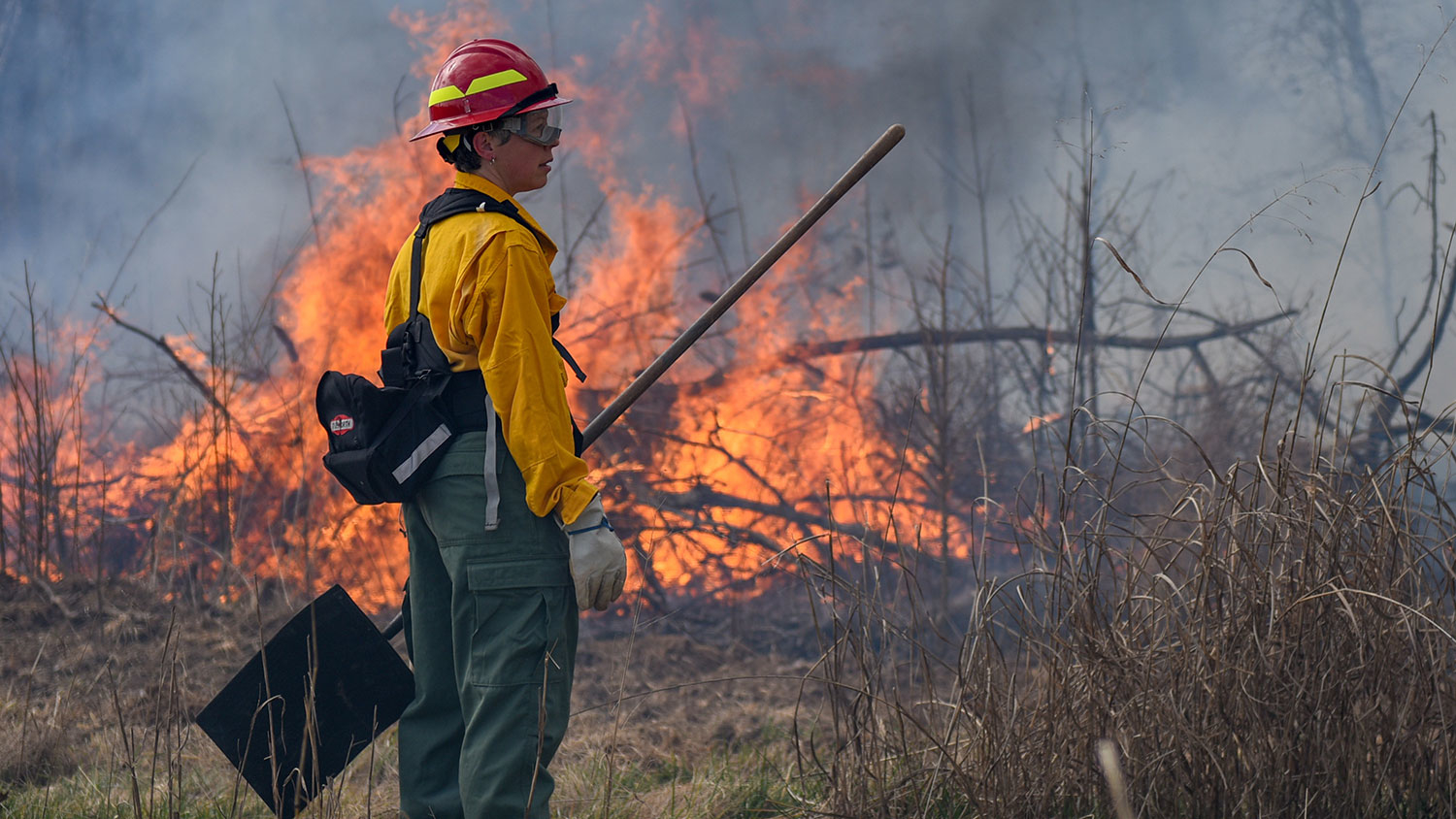Burning Desire

A fire swept through the brush amid a stand of old pines on an NC State field laboratory earlier this month, and for recently retired College of Agriculture and Life Sciences professor Tom Wentworth, that was more than a good thing. It was a necessary step toward achieving a long-held dream of restoring the site.
With a grant from NC State’s Sustainability Fund, Wentworth is working with collaborators in the College of Natural Resources to rejuvenate a rare 16-acre longleaf pine ecosystem that he’s used as a teaching tool for plant biology students for some 25 years.
The site, at NC State’s Lake Wheeler Road Field Laboratories, has more than 20 mature longleaf pines, some of which date back to the early 20th century.

Longleaf pines once thrived in an area that stretched from the Tidewater region in Virginia, down the Florida peninsula and across to east Texas, Wentworth said. But today, the pine and the ecosystem it supports are increasingly uncommon, especially in North Carolina’s Piedmont. The naval stores industry, intensive logging, fire suppression and rooting of seedlings by feral hogs are among the factors that contributed to the tree’s decline.
To reestablish the Piedmont longleaf pine ecosystem, Wentworth is working with Jodi Forrester, assistant professor in NC State’s Department of Forestry and Environmental Resources, and Ph.D. student David Schnake.
“To restore a stand like this, you have to introduce fire,” explained Wentworth, with NC State’s Department of Plant and Microbial Biology. “That’s because the trees won’t reproduce in shade. They really thrive in areas that are intentionally burned every few years to keep the understory clear and provide for a sunny germination spot free from excessive competition, especially from other woody plants, but even grasses.” The goal is to support a biologically diverse woodland with longleaf pine, other fire-resistant trees, and a fire-dependent understory with many grasses, other herbaceous species, and shrubs, he added.

The team started the restoration project last year by inventorying and thinning plants on the site. Now that last week’s intentionally set fire has cleared much of the brush, the team plans to plant about 5,000 longleaf pine seedlings and add signage that highlights the historical role of the tree in North Carolina as well as management practices that sustain the stand in the absence of wildfires.
The site’s proximity to NC State’s main campus makes it ideal as an outdoor laboratory for students in forest management and ecology, Wentworth said. In fact, the crew that conducted last week’s controlled burn included forest management students, and students also will be involved in monitoring what happens to the forest over time.

“In addition to having a role in educating students, the project could also raise awareness of the historical importance of longleaf pine forests and woodlands to North Carolina’s economy,” Wentworth said. The longleaf pine, now the state’s official tree, was a “very, very important economic engine in the Carolinas and further South,” for producing tar, pitch, turpentine and rosin, then for timber and pinestraw production, he added.
Although he retired in October, Wentworth intends to continue to be involved in the project.
“A big part of me is embedded in this natural area, so it makes sense for me to stay involved,” he said. “And with younger people like Jodi and David getting involved, I think the restoration project will be a wonderful tool in educating students about the historical ecology and economic importance of the longleaf pine ecosystem.”
This post was originally published in College of Agriculture and Life Sciences News.
- Categories: